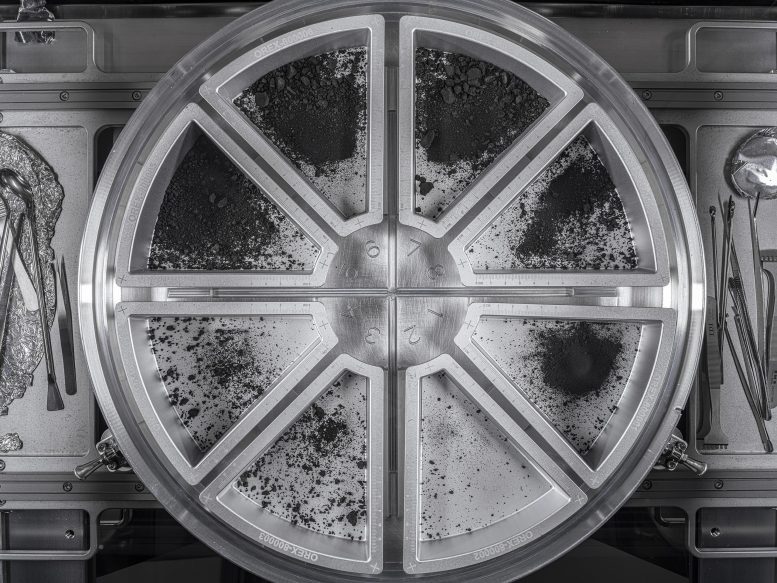
A view of eight sample trays containing the final material from asteroid Bennu. The dust and rocks were poured into the trays from the top plate of the Touch-and-Go Sample Acquisition Mechanism (TAGSAM) head. 51.2 grams were collected from this pour, bringing the final mass of asteroid sample to 121.6 grams. Credit: NASA/Erika Blumenfeld & Joseph Aebersold
NASA’s OSIRIS-REx spacecraft delivered an unprecedented 4.29 ounces of asteroid Bennu material to Earth, surpassing its mission goals. Despite initial challenges, the sample was successfully secured for future scientific research, ensuring a legacy of international collaboration and study of the solar system’s origins.
NASA’s OSIRIS-REx spacecraft delivered 4.29 ounces (121.6 grams) of material from asteroid Bennu when it returned to Earth on September 24, 2023; the largest asteroid sample ever collected in space and over twice the mission’s requirement.
Exceeding Expectations Early On
The mission team needed at least 60 grams of material to meet the mission’s science goals, an amount that had already been exceeded before the Touch-and-Go Sample Acquisition Mechanism (TAGSAM) head was completely opened. In October 2023, curation processors from the Astromaterials Research and Exploration Science (ARES) division at NASA’s Johnson Space Center in Houston were able to collect small rocks and dust from inside the large canister that housed the TAGSAM head, as well as from inside the TAGSAM head itself through the head’s mylar flap.
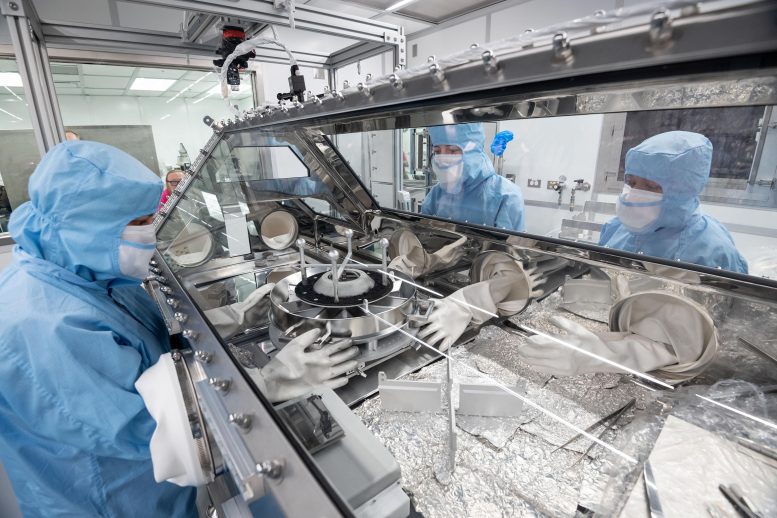
OSIRIS-REx astromaterials processors, from left, Rachel Funk, Julia Plummer, and Jannatul Ferdous prepare to lift the top plate of the Touch-and-Go Sample Acquisition Mechanism (TAGSAM) head and pour the final portion of asteroid rocks and dust into sample trays below. Credit: NASA/Robert Markowitz
Overcoming Challenges
Disassembly of the TAGSAM head was paused in late October 2023, when the team encountered two stubborn fasteners keeping them from being able to complete the process to reveal the final sample within.
After designing, producing, and testing new tools, the ARES curation engineers successfully removed the fasteners in January and completed disassembly of the TAGSAM head. The remaining Bennu sample was revealed and carefully poured into wedge-shaped containers. 1.81 ounces (51.2 grams) were collected from this pour. Combined with the previously measured 2.48 ounces (70.3 grams) and additional particles collected outside of the pour, the bulk Bennu sample mass totals 4.29 ounces (121.6 grams).
Securing a Legacy for Future Research
NASA will preserve at least 70% of the sample at Johnson for further research by scientists worldwide, including future generations.
From NASA Johnson’s repository, the Bennu material will be containerized and distributed for researchers to study. As part of the OSIRIS-REx mission, a cohort of more than 200 scientists around the world will explore the regolith’s properties, including researchers from many US institutions, NASA partners JAXA (Japan Aerospace Exploration Agency) and CSA (Canadian Space Agency), and more.
Later this spring, the curation team will release a catalog of the OSIRIS-REx samples, which will make the asteroid sample available for request by the global scientific community.



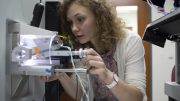


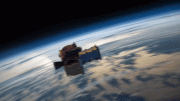
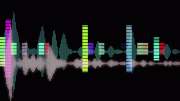
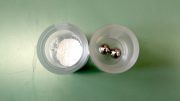
Be the first to comment on "Beyond the Mission Goals: How NASA Surpassed Expectations With Asteroid Bennu"